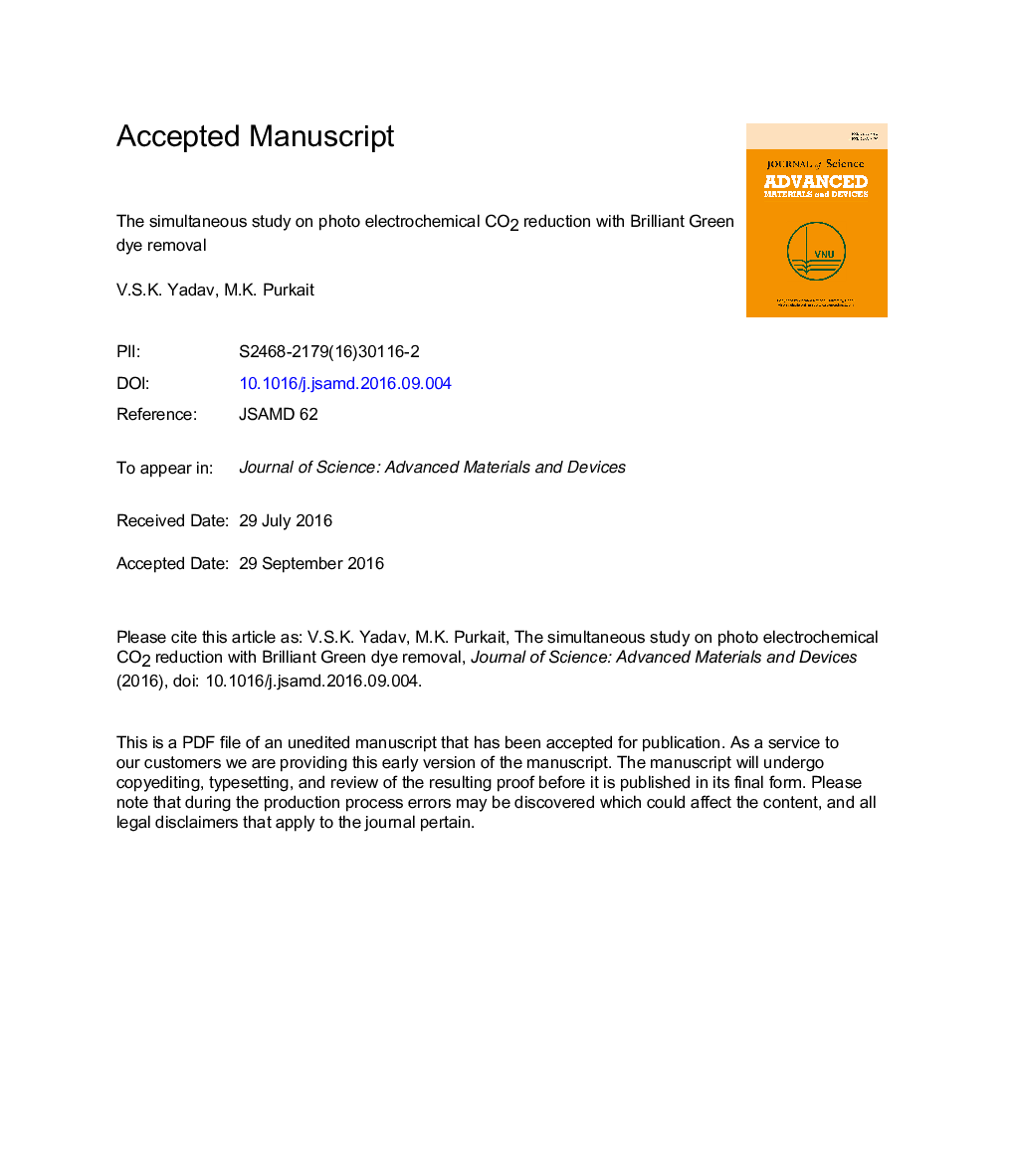| Article ID | Journal | Published Year | Pages | File Type |
|---|---|---|---|---|
| 5441665 | Journal of Science: Advanced Materials and Devices | 2016 | 18 Pages |
Abstract
The simultaneous study on photoelectrochemical CO2 reduction with Brilliant Green (BG) dye removal was studied in the present work. Experimental studies were done in aqueous solutions of sodium and potassium based electrolytes using a cathode [Zinc (Zn) and Tin (Sn)] and a common cobalt oxide (Co3O4) anode electrocatalyst. The influence of reaction with electrolyte concentration for the both catalysts was shown clearly with respect to time. The selected electrocatalysts were able to reduce CO2 to formic acid (HCOOH) along with high BG dye removal. With Sn as cathode, the maximum BG dye removal was obtained to be KHCO3-[95.9% (10Â min)-0.2Â M], NaHCO3-[98.6% (15Â min)-0.6Â M]. Similarly for Zn, KHCO3-[99.8% (10Â min)-0.4Â M], NaHCO3-[99.9% (20Â min)-0.8Â M] were observed respectively. Finally, the results have proven that higher efficiencies for BG dye removal were obtained along with HCOOH formation, which might be a better alternate for water purification and to decrease the atmospheric CO2 concentrations.
Related Topics
Physical Sciences and Engineering
Materials Science
Ceramics and Composites
Authors
V.S.K. Yadav, M.K. Purkait,
